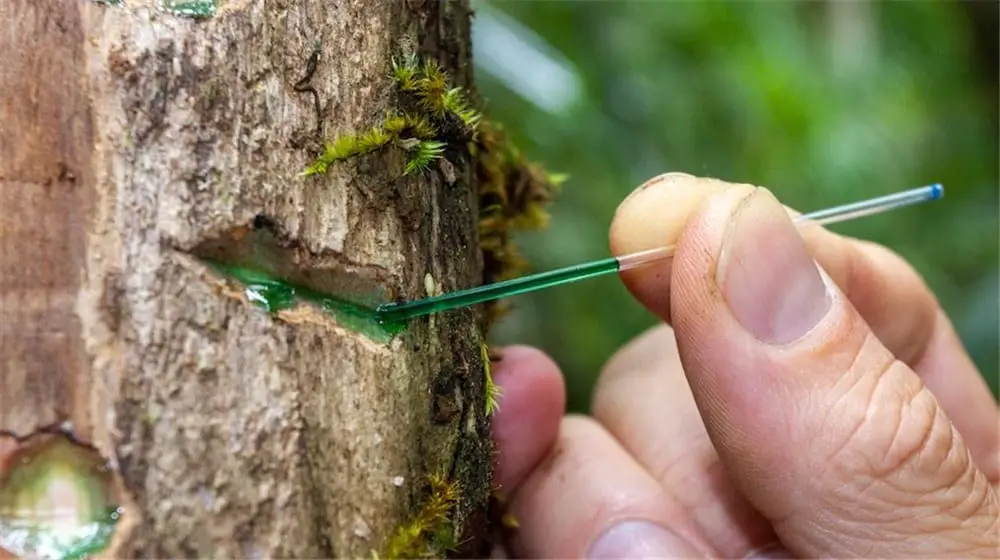No, it’s not science fiction. There are actually plants that .mine’ metals! One example is Phyllanthus Balgooyi. Indigenous to the jungles of the Philippines, this tree ‘bleeds’ a fluorescent green sap – sap that is extremely high in nickel.
Named after Professor Alan Baker, the botanist who first discovered the tree, Phyllanthus Balgooyi is a member of a scarce family of flora that can suck metal out of the ground.
That’s an ability that has a lot more than just novelty value. It could unlock a way to create the batteries required for electric vehicles without the need for environment destroying, large-scale mining operations.
Contents
Trees That Bleed Nickel: Nature’s Hidden Treasure
Professor Baker has dubbed these types of plants ‘hyperaccumulators’. The sap in Phyllanthus Balgooyi comprises close to 9 per cent nickel.
There are other hyperaccumulators in the plant kingdom. Some accumulate zinc, others cobalt and even gold, absorbing the minerals direct from the soil.
But finding a nickel hyperaccumulator was especially significant. That’s because nickel is a crucial element in the manufacture of lithium-ion batteries. This plant offers a possible way to create them without scarring the earth with mines.
Is the EV Movement an Environmental Saviour or a Disaster Waiting to Happen?
On the surface, the transition away from petrol and diesel glugging vehicles to clean, emission-free electric cars seems like a big win for the environment. The problem is that nickel mining generates huge volumes of waste material.
The environmental impact is so great that the Phillippines government suspended half of all nickel mining operations in 2017 citing these environmental concerns. Now, the solution may have been discovered in their jungle.
With demand for nickel for car batteries expected to increase tenfold by 2030, nickel mining will have to keep pace unless more environmentally alternatives are found.
Agromining – Harvesting Metal From Trees
This process is simple in theory. Find a space with nickel-rich soil and plant hyperaccumulators that will suck the element straight out of the soil. Clippings are taken and burned, which generates energy for biofuel and ashes rich in this element.
Malaysia is the first country to set up a metal farm using these hyperaccumulators, with the goal being to harvest the element for the production of lithium-ion batteries and stainless steel. Managed by the University of Lorraine, the farm is a demonstration model only, but it is consistently harvesting 200-300kg of nickel per hectare annually.
COVID-19 put the brakes on global exploration for more of these hyperaccumulating plant species and commercial agromining operations remain a long way off. Still, the potential is there, and the science has been proven.
These Metal Trees Could Potentially Rehabilitate Former Mining Sites
Another issue with mines is the lasting damage they do, even long after the workers have abandoned the site. The dirt is usually left full of toxic materials, and the land rendered unusable. It is believed that hyperaccumulators are a part of natural evolution where forests and plants have developed the ability to protect themselves from harm.
It is also believed that growing these metal-absorbing trees could become a revenue stream for farmers in developing countries. The potential is enormous.
Now if only we could find a way to grow sand…



